Poori is in Madras-Culcatta route. Kurda Road is the point to change to POORI CULCATTA route. From Poori Station the temple is about a mile and conveyance is available of all types.

Legend has it that the original image of Jagannath was found at the foot of a fig tree, in the form of an Indranila or the Blue Jewel. Its blinding brightness, prompted Dharma to request it to be hidden in the earth. King Indradyumna, of Malwa intending to discover this image, performed severe penances, and was instructed by Vishnu to go to the Puri seashore, and look for a floating log, and fashion an image from its trunk.
The King did discover the log of wood. Vishnu and Vishwakarma appeared in the form of artistes and prepared images of Krishna, Balarama and Subhadra from the tree. Interestingly, the wooden images being worshipped are renewed during special occasions. New images have been installed in 1863, 1893, 1931, 1950, 1969 and 1977.
Puri is located on the gentle slope of the Nila hill, adjacent to the sea. A sacred banyan tree is revered as a manifestation of Vishnu, the ocean - Balarama and a pool- the king Indradyumna. Pilgrims are required to offer worship first at a Shiva temple, and then at the banyan tree and then at the shrine to Balarama before proceeding to worship Jagannath. Subhadra is to be worshipped next.
The Temple: The vast temple complex occupies an area of over 400000 square feet, and is bounded by a 20 feet high fortified wall. This complex contains about 120 temples and shrines. The vimana of the Jagannath temple towers to a height of 192 feet.
Festivals: Elaborate worship services are carried out throughout the day here. There are as many as 24 festivals each year, the most important one of them being the Rath Yatra or the Chariot festival in the month June - July. The spectacular chariot festival involves the procession of three colossal chariots bearing the images of Jagannath, Balarama and Subhadra through the streets of Puri.
Jagannath Temple Puri - The land of Lord Jagannath, meaning 'Lord of Universe', is one of the most sacred pilgrimage spots in India. One of the four divine abodes lying on four directions of the compass; The Jagannath temple in Puri was built approximately 12th Century AD by King Chodaganga of the Eastern Ganga dynasty. The completion was later brought about by his descendant, Anangabhima Deva, during the 12th century.
Mahaprasada
Maha-prasada is pure vegetarian spiritual food offered to Lord Jagannath. Just by eating this mahaprasada one makes great spiritual advancement. Everyday, 56 varieties of prasada are offered to Lord Jagannath. The preparations are made traditionally and no onion, garlic, chillies or many varieties of vegetables (considered alien) are not used.
The celebrated Ratha Yatra Festival is said to have started in the time of Svarochisha Manu of the second manvantara and is predicted to continue until the end of the second half of Lord Brahma's lifetime. Even in the Valmiki Ramayana, it is mentioned that when Lord Rama was getting ready to leave this world, he told Vibhishan, Ravana's younger brother, to worship Lord Jagannatha, the Lord of the Iksvaku dynasty in His absence.
The Skanda Purana also fixes the date of the Ratha Yatra as the second day of the bright fortnight of the month of Ashadha, a day called Pushyami Nakshatra by astrological calculations. The Padma Purana describes that in Purushottama-Kshetra, or Jagannatha Puri, the supremely blissful Personality of Godhead pretends to be made of wood. In this way, although the Lord takes on what appears to be a material form, it is completely spiritual by the causeless mercy of the Lord for the conditioned souls who cannot perceive the transcendental domain of His.
On the day of the festival, the wooden idols of Krishna, Balrama and Subhadra are taken out in procession in three chariots to their summer temple for a week. The main chariot is 14 meters high and 10 meters square with 16 wheels. The actual construction of the carts begins two months before the festival day, on the third day of the bright fortnight of Vaisakha (April-May).
More than 600 trees, or 400 cubic meters of wood, are needed for the construction, taken from the local forests, along the banks of the Mahanadi River.
Using the simple tools and procedures as they have for the past hundreds of years, once the basic elements are made, such as the wheels, the actual construction begins only a few weeks before the festival.
The ropes of the huge chariots are pulled by millions of devotees. In the ancient times, devotees would occasionally throw themselves in front of the chariot of Sri Jagananath, for it was believed that to be crushed to death under its sixteen wheels was to go straight to heaven.
Since Sri Jagannath is a form of Vishnu and Sri Krishna, many of the rituals observed in Puri temple are associated with events in the life of Sri Krishna. Thus, this annual Car Festival represents Sri Krishna's Journey from Gokul to Mathura.
![clip_image002[4] clip_image002[4]](http://lh5.ggpht.com/_-aoqBW5KKbU/Su1-AprRIFI/AAAAAAAAAiY/67etkcEbI6I/clip_image002%5B4%5D_thumb.jpg?imgmax=800)
LORD JAGANNATH.
![clip_image002[6] clip_image002[6]](http://lh5.ggpht.com/_-aoqBW5KKbU/Su1-CETftEI/AAAAAAAAAig/h-yBZjsd2aM/clip_image002%5B6%5D_thumb.jpg?imgmax=800)
LORD BALABADRA
![clip_image002[8] clip_image002[8]](http://lh3.ggpht.com/_-aoqBW5KKbU/Su1-D-uugwI/AAAAAAAAAio/KRmxoUUOMvM/clip_image002%5B8%5D_thumb.jpg?imgmax=800)
LORDESS SUBHADRA
The Deities are adorned with cotton and silk fabrics, Gold Ornaments studded with precious stones, flowers of different varieties, Tulsi leaves, sandal paste, camphor. These articles are used in the daily and periodical rituals. Some important Alamkaras or costumes of the deities are mentioned below.
1. Abakasha (Tadapa uttari) Alamkaram.
This alamkaram is done everyday after Mangal Aarati for the Abakash rituals. The clothes which are worn by the deities for this purpose are known as "Tadapa" and "Uttariya".
2. Sadha alamkaram.
This aloamkaram is the normal costumes of deities which they wear five times in a day, especially after each food offering.
3. Bada Sringar alamkaram
This the last alamkaram of the deities done everyday before the night "Pahuda". Bada Sringar alamkaram is mostly of flowers of different colours and species. The deities wear silk clothes called 'Khandua'.
4. Chandan alamkaram.
This alamkaram is done for 42 days starting from Akshayya Tritiya day.
5. Ganapati or Hathi alamkaram.
On the full moon day in the month of Jyestha, after the bathing ceremony is over, the deities are dressed like elephants. Lord Jagannath and Lord Balabhadra appear like Ganesh (the Elephant God).
6. Suna(gold) alamkaram.
On the 11th day in the bright fortnight of Ashada, Suna alamkaram takes place, when the deities are in their respective chariots near the Lion's gate of Sree Jagannath temple. The deities are decorated with many gold ornaments. This alamkaram is also known as 'Bada Tadhau' vesha and Raja Vesha is also done on Dashahara, Kartik Purnima,Pousha purnima and Dola purnima.
7. Banabhoji alamkaram
It is done on the 10th day of the dark fortnight of Bhadraba. The deities are dressed as if going for a picnic, like cowherd boys.
8. Kaliyadalana Alamkaram.
On the 11th day of the dark fortnight of Bhadraba, Lord JAGANNATH is dressed like Lord Krishna killing the Kaliya Serpent.
9. Pralambasura Badha alamkaram.
It is done on the 12th day of the dark fortnight of Bhadraba(September), Lord Balabhadra's killing of the demon Pralambasura is depicted in this Vesha.
10. Krishna Balarama alamkaram.
This Vesha is done on the 13th day of the dark fortnight of Bhadraba. Lord Jagannath and Balabhadra are dressed like Lord Krishna and Balaram.
11. Bali Baman alamkaram.
On the 12th day of the bright fortnight of Bhadraba, Lord Jagannath is dressed like "Bamana"(dwarf). Bamana is the fifth incarnation of Lord Vishnu.
12. Radha-Damodara alamkaram From the 11th dayof the bright fortnight of Ashwina to the 10th day of the bright fortnight of Kartika, this alamkaram takes place.
13. Thiakia(Laxmi-Narayan) alamkaram.
It is done on the 11th day of the bright fortnight of Kartika.
14. Bankachula alamkaram.
It is done on the 12th day of the bright fortnight of Kartika.
15. Adakia(Tribikrama) Vesha
This is done on the 13th day of the bright fortnight of Kartika.
16. Dalikia alamkaram.
On the 14th day of the bright fortnight of Kartika, this is also known as Laxmi-Nrisimha alamkaram
17. Nagarjuna alamkaram
This alamkaram is occasionally done in the month of Kartika, when there are six days of "Panchaka". The lords are dressed like warriors. In the recent past, this alamkaram has been done on 16.11.1994. The previous four dates were 26.11.1993, 3.11.1968, 16.11.1967 and 26.11.1966.
18. Ghodalagi alamkaram.
During the period from the 6th day of the bright fortnight of Margasira to the 5th day of the bright fortnight of Magha(Basanta Panchami), the deities wear winter clothes.
19. Jamalagi alamkaram.
From Basanta Panchami to Dola Purnima, the deities wear modified Ghoda(Winter dress).
20. Padma alamkaram.
This vesha is done on any saturday or Wednesday between the new moon day of Magha and Basanta Panchami. "Padma" means lotus. The dress materials made of lotus, "Sola" lace and paper,gum etc.
God: Jagannathan, Krishnan, Balapadran, Subhadra- Facing East.
pushkarini: Markandeya, Varuna, Rohini.
Tree: Banyan Tree.
Vimana: Indra, Sreemandira.
There are many choultires in which the pilgrims can stay and prepare food.
Websites:
Website designed by National Informatics Centre, Orissa and content provided by Jagannath Temple Administration
Copyright © 2008 - 09 Orissa Tourism.org. All Rights Reserved.
Email: info@toshali.in
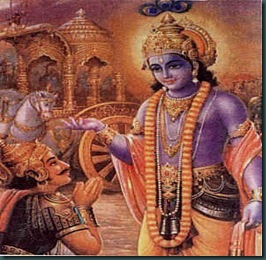

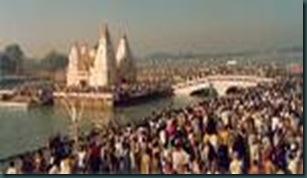
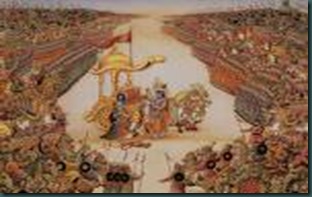

![clip_image001[4] clip_image001[4]](https://blogger.googleusercontent.com/img/b/R29vZ2xl/AVvXsEi5m0Xi8OAkB5Fhmr4yTsgxh_86rUqJMT_uLG6kr25fUnxltpoiEIH9ACPQzesRCwUsaKT3Bs1ASwSmQ27KGeiTPNKQaJSNeyGgj3BY0xDjBRFMUuOHLnbsF3ZyzJ3F9HT4BYo8Z3itVWo/?imgmax=800)
![clip_image001[6] clip_image001[6]](http://lh6.ggpht.com/_-aoqBW5KKbU/SvawqpvVrCI/AAAAAAAAAmw/LZPSPDNsJA0/clip_image001%5B6%5D_thumb.jpg?imgmax=800)
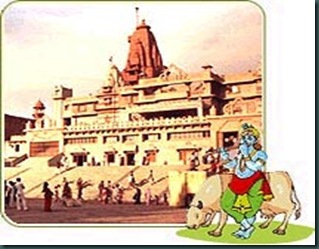
![clip_image001[8] clip_image001[8]](http://lh6.ggpht.com/_-aoqBW5KKbU/SvVTf0uF5qI/AAAAAAAAAl4/Q4BhCCurgdA/clip_image001%5B8%5D_thumb%5B2%5D.jpg?imgmax=800)
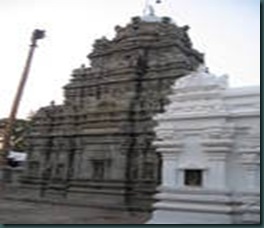

![clip_image001[10] clip_image001[10]](http://lh5.ggpht.com/_-aoqBW5KKbU/SvVTqR8SVgI/AAAAAAAAAmQ/LNVyf1LK0lo/clip_image001%5B10%5D_thumb%5B2%5D.jpg?imgmax=800)
![clip_image001[12] clip_image001[12]](http://lh6.ggpht.com/_-aoqBW5KKbU/SvVTtK-MyFI/AAAAAAAAAmY/n9jcT8vRons/clip_image001%5B12%5D_thumb%5B2%5D.jpg?imgmax=800)
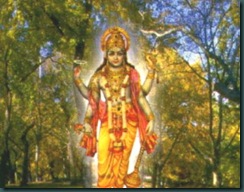
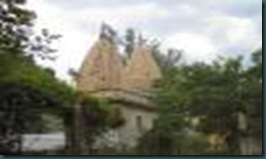

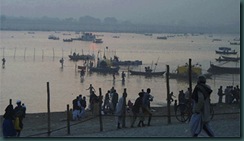


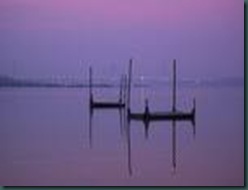

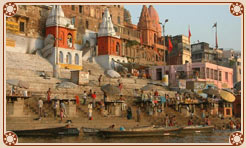 Varanasi or Kashi is older than traditions. Varanasi presents a unique combination of physical, metaphysical and supernatural elements. According to the Hindu mythology, Varanasi liberates soul from human body to the ultimate. It is the Ganga Ghats of Varanasi that complement the concept of divinity. Ghats of Ganga are perhaps the holiest spots of Varanasi. The Ganga Ghats at Varanasi are full of pilgrims who flock to the place to take a dip in the holy Ganges, which is believed to absolve one from all sins.
Varanasi or Kashi is older than traditions. Varanasi presents a unique combination of physical, metaphysical and supernatural elements. According to the Hindu mythology, Varanasi liberates soul from human body to the ultimate. It is the Ganga Ghats of Varanasi that complement the concept of divinity. Ghats of Ganga are perhaps the holiest spots of Varanasi. The Ganga Ghats at Varanasi are full of pilgrims who flock to the place to take a dip in the holy Ganges, which is believed to absolve one from all sins. 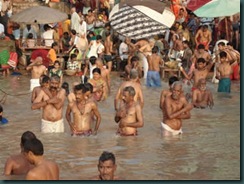


![clip_image001[6] clip_image001[6]](http://lh5.ggpht.com/_-aoqBW5KKbU/Su6Lb4RjELI/AAAAAAAAAi4/WSlr3JY6uwk/clip_image001%5B6%5D_thumb%5B3%5D.jpg?imgmax=800)
![clip_image001[8] clip_image001[8]](https://blogger.googleusercontent.com/img/b/R29vZ2xl/AVvXsEjWu7pXKqS5qxSWhEM-A8PekObmNoCgdvwf_PG0jN-Czf_DiY3_ZCdr7u2toxE219qZRJBkS2KC_5kyznG4rI5PTshtUahlsdTBva1F9YyF7tvr9T1BWPE5-2jfwEOxf_T9Px9-gzyT9iQ/?imgmax=800)

![clip_image002[4] clip_image002[4]](http://lh5.ggpht.com/_-aoqBW5KKbU/Su1-AprRIFI/AAAAAAAAAiY/67etkcEbI6I/clip_image002%5B4%5D_thumb.jpg?imgmax=800)
![clip_image002[6] clip_image002[6]](http://lh5.ggpht.com/_-aoqBW5KKbU/Su1-CETftEI/AAAAAAAAAig/h-yBZjsd2aM/clip_image002%5B6%5D_thumb.jpg?imgmax=800)
![clip_image002[8] clip_image002[8]](http://lh3.ggpht.com/_-aoqBW5KKbU/Su1-D-uugwI/AAAAAAAAAio/KRmxoUUOMvM/clip_image002%5B8%5D_thumb.jpg?imgmax=800)